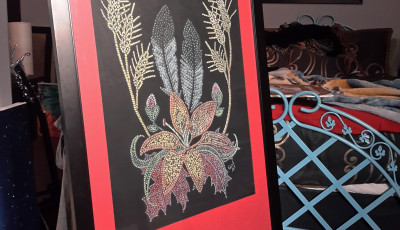INDIGNEOUS BOOM: Some say stories are an Art

Some Say Stories are an Art
There are many ways to explain storytelling. In spiritual ways, First Nations people understood the art and used this method as a key to communicate and to share historical knowledge. Since the beginning of time, however, almost all peoples around the world have utilized the art for the same purpose as well; whether it be linguistically, musically, or visually. In a personal manner, the analyzations of various stories in a lifetime have concluded to realize that all stories do lead to the same purpose and are similarly different in their ways.
Stories are related to reality because they are told with influence of a belief. No matter which human tells a story, the format is critically thought of in an affectionate way—usually suited to the situation, background and environment at the time. Many people do believe that there is a standard format a story should be told, which in fact is not true. But to understand or to conduct the language of a story, there has to be sensitive consideration to the cultural landscape that coincides the influenced mentality of the story teller; it shows the diversity of the art.
Nowadays, there are not a lot of cases where people partake in the idea that stories are alive and carry a spirit. And on many occasions, the energy within a story can still be a stunning experience as it carries a bundle of ancestral knowledge. In addition to this, there is not too many people alive who still abide by old nature when conducting a story. Especially now, the art of storytelling is influenced by new technology and social values. But because it is apart of lineage and one of the only ways to hand on generational knowledge, it will take too much effort for the art to deteriorate.
So, different perspectives initiate the process of thought and emotion. while any old story can be told one way, there will always be a new way to tell that same story. But as each new idea is introduced to the thought process, it should be taken into serious consideration that many people rely on storytelling as a form of education. Therefore, however anyone decides to tell a story, it should usually highlight relevant things to the topic being taught. For example, if a traditional First Nations elder were to tell a story to a youngling, then the story would be told to suit the way the people lived. Sometimes children lacked in areas more than others, so they then would be taken under a storytellers guidance to be a pupil of that subject they lack in. The elder would then think of life experiences and try their very best to make that child understand what they need to know. And through all of this, it is to understand that storytelling is a very simple yet advanced education system that can almost teach anyone anything.
A lot of the time, the definition of storytelling can be personal. And like many other things in this world, there is no true way to dictate how a story should be told. But in all hopes, storytelling should at least be convenient to the listener. But truly understanding the spirit contained in stories is helpful for learning about your own lineage. either way, there are many ways to explain life. Everyone understands in their own way.
Jamin Mike, Indigenous Boom




